
Systemic Lupus Erythematosus – A Common Autoimmune Disease
Systemic lupus erythematosus, also referred to as SLE, is one of the most common autoimmune diseases. It mainly involves the overlying skin and causes its inflammation which results in the appearance of skin rashes. This autoimmune disease is also known to affect many other systems of the human body. The most common symptoms of the disease include fever, joint pain or swelling (arthritis), and fatigue. The symptoms are usually moderate to severe. This prognosis of this disease may not be good if it is not treated properly.
- Important notification about information and brand names used in this slideshow!
- Photo courtesy of Andrea Guerra by Flickr : www.flickr.com/photos/aguerra/435091011/
- www.womenshealth.gov/publications/our-publications/fact-sheet/autoimmune-diseases.cfm
- http://voices.yahoo.com/common-autoimmune-disorders-treatments-explanations-230595.html?cat=5
- http://www.evenbetterhealth.com/autoimmune-disease-symptoms.php

Celiac Disease – A Gastrointestinal Disorder
Celiac is a disease which develops due to a hypersensitivity of the small intestine to gluten which results in indigestion. Gluten is a form of protein that is found in rye, wheat, and barley. The immune response is triggered when a person suffering from celiac disease consumes gluten. As soon as the gluten food reaches the small intestine, it activates an immune reaction which causes the inflammation of the internal lining of the small intestine which results in indigestion. Weight, flatulence, bloating, and diarrhea are the most common symptoms of celiac disease. This disease may cause deficiencies of essential minerals in the body which may result in a decreased functioning of the organs.
- Important notification about information and brand names used in this slideshow!
- Photo courtesy of Vishruth Harithsa by Flickr : www.flickr.com/photos/36562784@N03/8122473260/

Diabetes Type 1 – One Of The Most Famous Autoimmune Diseases
Diabetes type 1, also known as insulin dependent diabetes mellitus, is a very common autoimmune disease found in children. Beta cells found in the pancreas are responsible for insulin production in the body. Insulin is released into the blood to maintain glucose levels. Autoimmune destruction of beta cells of the pancreas results in the development of type 1 diabetes mellitus. After the destruction of beta cells, there is no other source of insulin production in the body, and that results in high blood sugar levels. Polydypsia (increased thirst), polyphagia (increased appetite), and polyuria (increased urine frequency) are the main symptoms of diabetes.
- Important notification about information and brand names used in this slideshow!
- Photo courtesy of Elisa Self by Flickr : www.flickr.com/photos/elisaself/7391289378/
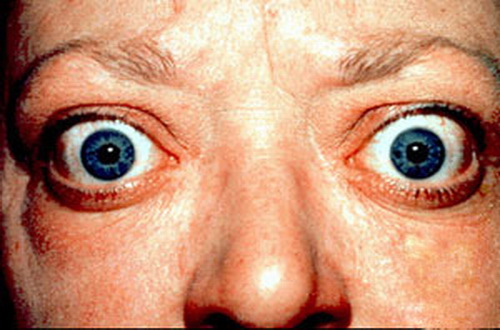
Graves' Disease - Hyperthyroidism
Grave’s Disease is one of the most common autoimmune diseases that involve the thyroid gland. It is usually caused by an iodine deficiency and is strongly associated with goiter (an enlargement of the thyroid gland). Grave’s Disease is known to cause over-stimulation of the thyroid gland which results in the excessive secretion of thyroid hormones. T3 & T4 are the most common thyroid hormones that help in the proper functioning of several systems of the body including the cardiovascular system, central nervous system, digestive system, and musculoskeletal system. This condition is usually treated with antithyroid medications but if the medications fail to work, surgery is the treatment of choice.
- Important notification about information and brand names used in this slideshow!
- Photo courtesy of Warfieldian by Wikimedia Commons : en.wikipedia.org/wiki/File:Proptosis_and_lid_retraction_from_Graves%27_Disease.jpg

Multiple Sclerosis (MS) – A Nervous System Disease
The word “Sclerosis” means abnormal hardening of body tissue. Multiple sclerosis (MS) is an autoimmune disorder that is associated with the nervous system. This disease primarily affects the brain and spinal cord which results in loss of sensation, balance, vision, and muscle control. In MS, the body’s immune system attacks brain cells and the spinal cord which are the two main components of central nervous system. The early signs and symptoms of MS include vision problems, thinking problems and memory impairment. Some other symptoms of MS include numbness, muscle weakness, knee pain, muscle spasm, difficulty in coordination, and bladder and bowel difficulties.
- Important notification about information and brand names used in this slideshow!
- Photo courtesy of KOMUnews by Flickr : www.flickr.com/photos/komunews/8120709093/

Hair Disorders (Alopecia, Vitiligo)
Alopecia, commonly known as alopecia areata, is defined as complete or partial loss of hair. It is one of the most common hair loss disorders. It is an autoimmune disorder which occurs when the immune system mistakenly attacks the hair follicles of the body. It may occur in any area of the body where hair normally grows. Baldness is the most common feature of alopecia areata. Initially, patients experience unexplained hair loss and complain of hair thinning. Vitiligo is an autoimmune skin disorder in which patches appears on the skin due to loss of skin pigment. Hair fall is seen in most cases. This disease tends to run in families.
- Important notification about information and brand names used in this slideshow!
- Photo courtesy of Seth Tisue by Flickr : www.flickr.com/photos/tisue/2187917555/

Rheumatoid arthritis – An Inflammatory Joint Diease
Rheumatoid Arthritis (RA) is a chronic progressive autoimmune disease that causes the inflammation of the joints and other areas of the body. It can affect people of any age. This disease usually involves the joint symmetrically and is characterized by periods of disease flare and remission. It usually involves small joints such as joints of fingers, wrists, ankles, and feet. The inflammation of the joint caused by rheumatoid arthritis may result in the permanent deformity of the joint. RA typically presents with z-shape deformity of the thumb. There is no specific cause of RA. It is usually treated with NSAIDs & corticosteroids along with antirheumatic drugs (DMARDs).
- Important notification about information and brand names used in this slideshow!
- Photo courtesy of Erwin Soo by Flickr : www.flickr.com/photos/erwin_soo/8234207958/

Psoriasis – A Skin Disease
Psoriasis is a very common skin disorder that is mostly seen in adulthood (20 to 40 years). It causes chronic inflammation of the skin. Obese people who are predisposed to heart diseases and diabetes are more likely to develop this inflammatory skin disorder. A family history of psoriasis and certain environmental factors are known to cause the disease. The presenting symptoms of this disease are silvery scales that develop on the extensor surfaces on the body. Elbows and knees are the most common sites where these silvery scales are formed. Most people suffering from psoriasis also show symptoms related to their nails such as nail pitting and oncholysis.
- Important notification about information and brand names used in this slideshow!
- Photo courtesy of Mysi Ann by Flickr : www.flickr.com/photos/mysiann/489536302/
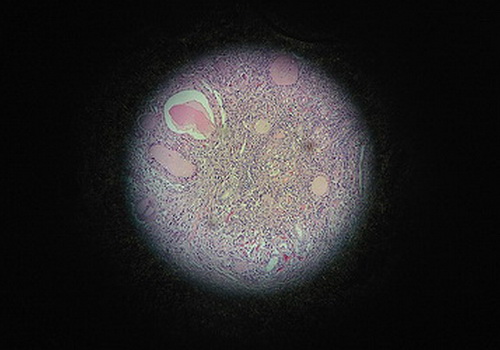
Hashimoto's Thyroiditis - Hypothyroidism
Hashimoto’s thyroiditis, also known as chronic lymphocytic thyroiditis, is an autoimmune disease in which the thyroid gland is attacked by the immune system due to an antibody mediated immune process. This disease causes the inflammation of the thyroid gland which initially results in hyperthyroidism. After a specific period of time, thyroid activity is suppressed, resulting in decreased levels of thyroid hormones in the body – hypothyroidism. Tiredness, muscle weakness, constipation, weight loss, a puffy face, a hoarse voice, pale dry skin, unexplained weight gain, joint pain, and muscle tightness are some of the main symptoms of this disorder. Hashimito’s thyroiditis may result in goiter if left untreated. Levothyroxine is recommended in most cases because of decreased levels of thyroid hormones.
- Important notification about information and brand names used in this slideshow!
- Photo courtesy of Niels Olson by Flickr : www.flickr.com/photos/niels_olson/9316230075/
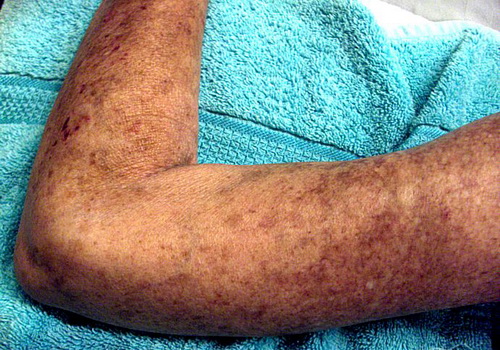
Scleroderma – A Skin Disorder
Tightening and hardening of the skin and the connective tissues is known as scleroderma. It is a superficial skin disease but it may involve the underlying organs (blood vessels, muscles, etc.) in some cases. Almost all cases of scleroderma present with hard and tight patches on the skin. The size, location, and number of patches vary according to the type of the disease. The most common early symptom of scleroderma is an exaggerated response to low temperature or stress. Color change and pain is experienced in toes and fingers. This disorder may also involve other organs like the digestive system (most common), heart, lung, and kidneys.
- Important notification about information and brand names used in this slideshow!
- Photo courtesy of AVM by Wikimedia Commons : en.wikipedia.org/wiki/File:Left_Arm_Scleroderma_Patient_.jpg




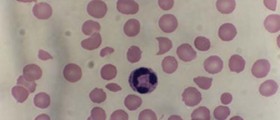


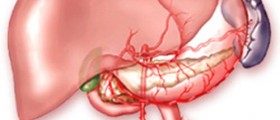






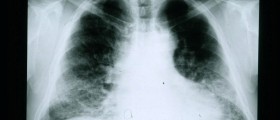




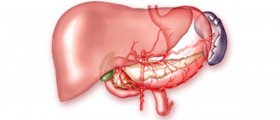

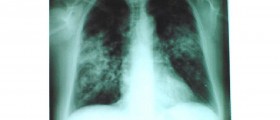





Your thoughts on this
Loading...